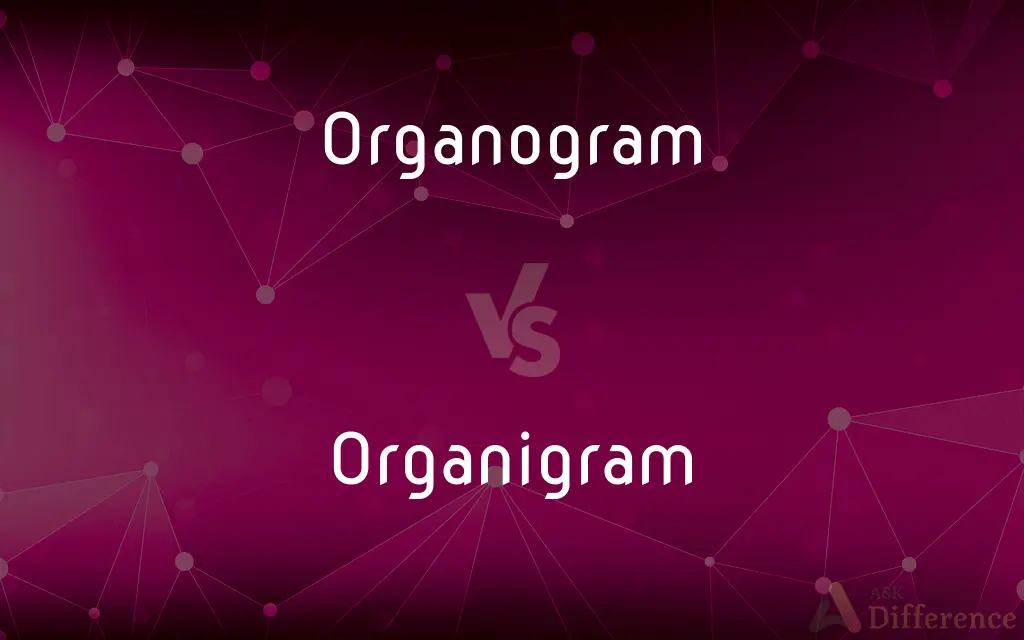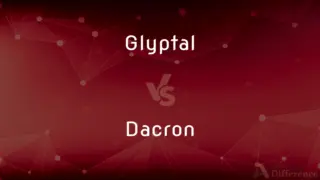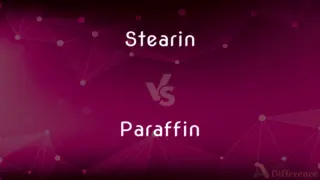Organogram vs. Organigram — What's the Difference?
By Fiza Rafique & Urooj Arif — Updated on March 22, 2024
Organogram focuses on hierarchical structure visualization, whereas Organigram emphasizes diagrammatic representation.

Difference Between Organogram and Organigram
Table of Contents
ADVERTISEMENT
Key Differences
An organogram is a visual tool used primarily in business and organizations to depict the hierarchy and relationships between different roles and departments. It outlines the structure of an organization, showing who reports to whom. On the other hand, an organigram is another term for the same concept, often used interchangeably with organogram, especially in British English. It serves the same purpose: to provide a graphical representation of an organization's structure.
While an organogram is typically used to illustrate the chain of command within an organization, highlighting managerial or supervisory relationships, an organigram focuses on the layout of these relationships in a diagrammatic form. Both are used to enhance understanding of organizational structure and to improve communication and efficiency within the organization.
Organograms are often detailed, including job titles, names of individuals, and sometimes even job descriptions, to offer a comprehensive view of the organizational structure. Whereas organigrams might be simpler, focusing on the connections and reporting lines between different parts of the organization without delving into extensive details.
In terms of usage, "organogram" is more commonly used in certain regions and sectors, reflecting a preference in terminology rather than a difference in the tool's purpose or functionality. Conversely, "organigram" might be preferred in other areas, yet both terms describe the same concept of an organizational chart.
Despite these similarities, the choice between using "organogram" or "organigram" can sometimes depend on the audience's familiarity with the term, regional preferences, or the specific context in which the diagram is being used. It's essential to consider these factors when deciding which term to use to ensure clear communication.
ADVERTISEMENT
Comparison Chart
Definition
A chart showing the structure of an organization
A diagram illustrating the structure of an organization
Focus
Hierarchical relationships and roles
Diagrammatic representation of organizational structure
Detail Level
Often includes detailed information such as names and roles
May be simpler, focusing more on connections
Regional Preference
Varied, with some regions preferring "organogram"
Varied, with some regions preferring "organigram"
Usage
Can be used interchangeably with "organigram"
Can be used interchangeably with "organogram"
Compare with Definitions
Organogram
A tool for visualizing the chain of command.
The organogram clearly showed who reported to the CEO.
Organigram
A graphical illustration of an organization's structure.
The organigram was posted in the office to help staff understand reporting lines.
Organogram
A chart that outlines the roles and relationships within an organization.
The HR department updated the organogram to reflect the new positions.
Organigram
A visual tool used for representing hierarchical structures.
The organigram made it easy to see the direct reports of each manager.
Organogram
A diagram used in strategic planning and organization design.
During the meeting, the organogram was used to identify redundancies.
Organigram
A chart used to depict the layout of an organization.
The company's organigram was updated annually.
Organogram
A visual representation of an organization's structure.
The new manager studied the organogram to understand the company's hierarchy.
Organigram
A simplified diagram showing organizational relationships.
The project team created an organigram to outline the workflow.
Organogram
A schematic depiction of organizational units and their relationships.
The organogram helped new employees understand where they fit within the company.
Organigram
A diagrammatic representation of an entity's framework.
The organigram provided a clear picture of the organizational changes.
Organogram
(management) organigram
Organigram
(management) A graphical representation of the structure of an organization, showing groups and departments and their interconnections and inter-responsibilities
Common Curiosities
What is an organogram?
An organogram is a chart that visually represents the structure of an organization, showing hierarchical relationships and reporting lines.
Can an organigram be used in small businesses?
Yes, an organigram can be beneficial for small businesses to clarify roles, responsibilities, and reporting relationships, even in a smaller setting.
Is there a difference between an organogram and an organizational chart?
No, an organogram is essentially the same as an organizational chart, and both terms are often used synonymously.
Can an organigram include names and job titles?
Yes, an organigram can include names, job titles, and sometimes additional details to offer a more comprehensive view of the organizational structure.
Do organograms and organigrams only apply to businesses?
No, organograms and organigrams can be used in any organization, including non-profits, government agencies, and educational institutions, to depict their structure.
How does an organogram help new employees?
An organogram helps new employees understand their role, reporting lines, and the overall structure of the organization, facilitating quicker integration.
Are organogram and organigram interchangeable?
Yes, in many contexts, the terms organogram and organigram are used interchangeably to refer to a chart or diagram depicting an organization's structure.
When should I use an organogram?
An organogram is useful when you need to visualize the structure of an organization, especially for strategic planning, onboarding new employees, or reorganizing departments.
What software can be used to create an organogram?
Various software tools, such as Microsoft Office, Visio, and specialized diagramming software, can be used to create an organogram.
What is an organigram?
An organigram is a diagram that illustrates the organizational structure of an entity, focusing on roles and relationships.
What is the primary purpose of an organogram?
The primary purpose of an organogram is to provide a clear visual representation of the hierarchy and relationships within an organization.
Can an organogram show cross-functional teams?
Yes, an organogram can include cross-functional teams, showing how they fit into the overall structure and their relationships with other units.
Is it necessary for every organization to have an organogram?
While not mandatory, having an organogram is highly beneficial for clarity, communication, and operational efficiency within any organization.
How often should an organogram be updated?
An organogram should be updated whenever there are significant changes in the organization, such as new hires, departures, or restructuring.
How detailed should an organigram be?
The level of detail in an organigram can vary depending on the purpose and audience. It should be detailed enough to clarify the structure and reporting lines without overwhelming the viewer.
Share Your Discovery

Previous Comparison
Glyptal vs. Dacron
Next Comparison
Stearin vs. ParaffinAuthor Spotlight
Written by
Fiza RafiqueFiza Rafique is a skilled content writer at AskDifference.com, where she meticulously refines and enhances written pieces. Drawing from her vast editorial expertise, Fiza ensures clarity, accuracy, and precision in every article. Passionate about language, she continually seeks to elevate the quality of content for readers worldwide.
Co-written by
Urooj ArifUrooj is a skilled content writer at Ask Difference, known for her exceptional ability to simplify complex topics into engaging and informative content. With a passion for research and a flair for clear, concise writing, she consistently delivers articles that resonate with our diverse audience.
















































